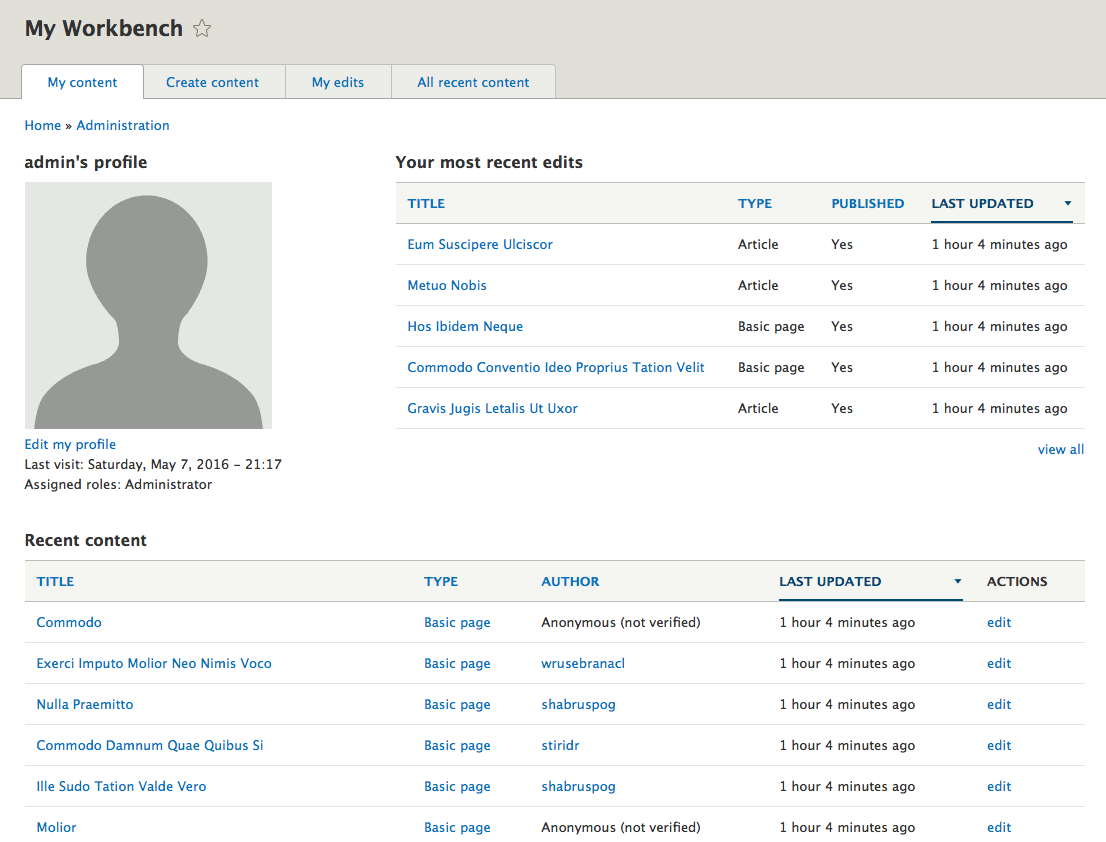It's Here: Workbench for Drupal 8
How we're helping to solve common editorial problems in Drupal 8 with the Workbench suite of modules.

In Dries Buytaert’s latest blog post about the state of Drupal 8 adoption, he mentions the results of a survey of 1,800 people. The number one reason that people haven’t upgraded to Drupal 8 yet is availability of modules.
Feature readiness is a critical topic for agencies and clients alike. At Palantir, it particularly affects the Workbench series of modules. We developed Workbench for Drupal 7 to address a set of common editorial problems:
- An editorial workspace customized for each editor, which shows what work needs to be done next.
- A draft-revision-published workflow.
- Review states that require permission to publish content.
- The ability to create a new “forward revision” waiting for approval while retaining the published version.
- An extensible, consistent workflow system.
- Access controls that grant access to specific sections of a website using a hierarchy that maps to an organization chart.
The modules are a cornerstone of every site we build in Drupal 7 – and many that we don’t.
We're happy to report that Workbench is available for Drupal 8
We receive emails and calls often inquiring about the state of Workbench in Drupal 8; folks in government, higher education, nonprofits, and media all use Workbench. It's a testament to the module suite, and how vital it has been to countless organizations over the years, regardless of industry. As the former head of digital at Barnard College, which used Workbench extensively, explains:
Another difficult, though probably common, requirement dealt with access and permissions. With 40-plus academic departments and roughly 200 regular editors of the overall website, Barnard's permissions needs don't fall neatly along the lines of traditional Drupal publishing rights.
For this reason, we needed a system that could handle granular levels of access to particular pieces of content, such that an editor could have access to edit one sibling and its children, but not all siblings of the first.
The Workbench module developed by Palantir handles these needs well by using a hierarchical vocabulary to set levels of access for each piece of content.
The module addresses a common need. So common, in fact, that our partner Acquia has included Workbench as part of its new author-focused Lightning distribution for Drupal 8.
What is Workbench?
Workbench is made up of three essential modules, which provide the functionality listed above. Here’s is an update on the current status of each.
Workbench Moderation
Thanks to a grant from the Module Acceleration Program at Acquia, and the work of the content staging group, Workbench Moderation has a stable release. We’ll be talking about that process at DrupalCon, too. The work we’ve been doing in this space also factors in to Dries’ call for better content authoring tools, so expect to see more from us in this space.
Workbench Access
We’ve been working on access controls for a very long time. (Over 10 years.) Our priority for Drupal 8 has been on moderation, so access is a bit of a side project. You can download pre-alpha code and see the list of required features. The good news, however, is that we’re actively testing the module on a client project, so we expect a stable release by midsummer.
Update: The alpha1 release was made on May 6th!
Workbench
The core Workbench module is largely a collection of custom Views that create dashboards for content editors. With Views in core, this module is less critical now, and we’ve made sure that both Workbench Moderation and Workbench Access provide Views support. The basic Workbench views are provided, but integration with Access and Moderation are yet to be determined.
Update: The alpha1 release was made on May 7th!


